
The use of sunglasses is not just a fashion choice. Sunglasses can provide protection from harmful ultraviolet light. UV rays can potentially cause damage to the lens and retina of the eye. Further to this, the ozone layer is thinning and more and more ultraviolet light is beginning to penetrate the ozone. The UV light of the sun now poses a serious risk to us all.
Tinting
Excessive exposure to UV light can cause serious problems for the crystalline lenses in our eyes. Tinting of the eyeglasses alone will not protect our eyes from danger. In fact, this might have the opposite effect. Tinting allows our pupils to dilate, which allows more light to flow behind the eyes. This is potentially harmful, considering that more sunlight equals more UV rays. The only thing that tinting alone accomplishes is to provide shade for the eyes, and to reduce glare.
The most efficient protection is provided by sunglasses whose lenses have a UVA and UVB tolerance of between 290 and 400nm.
UV
UV light consists of invisible, short wavelength rays. These rays are measured in nanometers (NM). UV can be broken down into 3 categories: UVA, UVB and UVC. UV levels that are below 280 (UVC) are normally harmless, as they are absorbed by the earth’s atmosphere and thus pose little real threat to us. UVB is stronger than UVC (280-315nm) and can cause sunburn, snow blindness and skin cancer. The higher the altitude and the closer the sun, the more common will be the UVB rays. UVA (315-380nm) is extremely dangerous. It can cause chronic eye damage, particularly if exposure is constant. Rays can cause retinal damage and cataracts. However, they are most commonly known as the cause of wrinkling and aging of the skin. It is possible for UVA rays to pass through clouds, glass, water and even clothing.
UV can be reflected by water, sand and snow, so it is necessary to protect onself against this. The thinning of the ozone layer has lead to an increased danger of UV exposure. Protection is advised even on cloudy days.
It is possible to add UV protection to any prescription spectacles. Those who work outdoors will benefit greatly from UV protection, and for those who take part in high altitude or winter sports, UV protection is an absolute necessity. Computer VDUs and fluorescent lights might also lead to problems, so it might be advisable for those who work in these conditions to use some kind of UV protection.


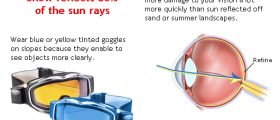
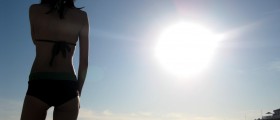
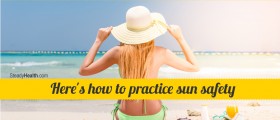
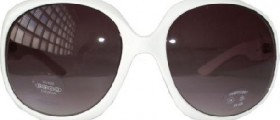






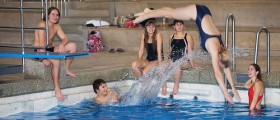

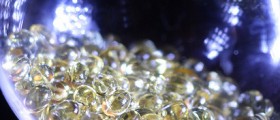


Your thoughts on this
Loading...